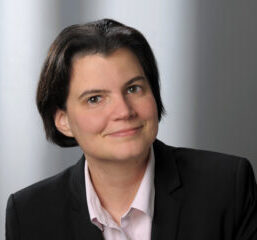GRK 2905 – Ultrafast Nanoscopy
From single particle dynamics to cooperative processes

- This event has passed.
GRK Colloquium:
Franz Giessibl & Sabine Maier
June 6 @ 14:00 – 16:00
Venue: Run auditorium
2 pm
Atomic Force Microscopy (AFM)
This tutorial presentation builds on Jascha Repp’s introduction to scanning tunneling microscopy (STM) six months ago. STM relies on the monotonic exponential decay of the tunneling current with distance. This decay at a factor of ten per Angstrom distance reduction ensures a high spatial resolution and a relatively simple implementation of STM. AFM is harder, as the forces between a sharp tip and a sample often have strong long-range van-der-Waals compo-nents, the forces are non-monotonic and the experimental measurement of small forces measurements (nN and below) is more difficult than the measurement of tunnling currents (nA and below). Frequency modulation AFM with stiff self-sensing cantilevers (qPlus sensors) provides a powerful solution that even obtains higher spatial resolution than STM.

Prof. Dr. Franz J. Gießibl
University of Regensburg
3 pm
Bottom-up fabrication and electronic structure of atomically precise low-dimensional materials
The ability to engineer atomically precise low-dimensional structures with tailored electronic properties is essential for the development of future electronic and quantum materials. This presentation focuses on molecular architectures constructed through bottom-up surface reactions. By combining scanning probe microscopy with density-functional theory, we investigate their atomic-scale structure and electronic characteristics. Recent advances in the synthesis and characterization of surface-supported 2D polymers and nanographenes illustrate how structural precision enables electronic property control. These studies offer fundamental insights into the design and functionality of low-dimensional materials.

Prof. Dr. Sabine Maier
FAU Erlangen-Nürnberg

